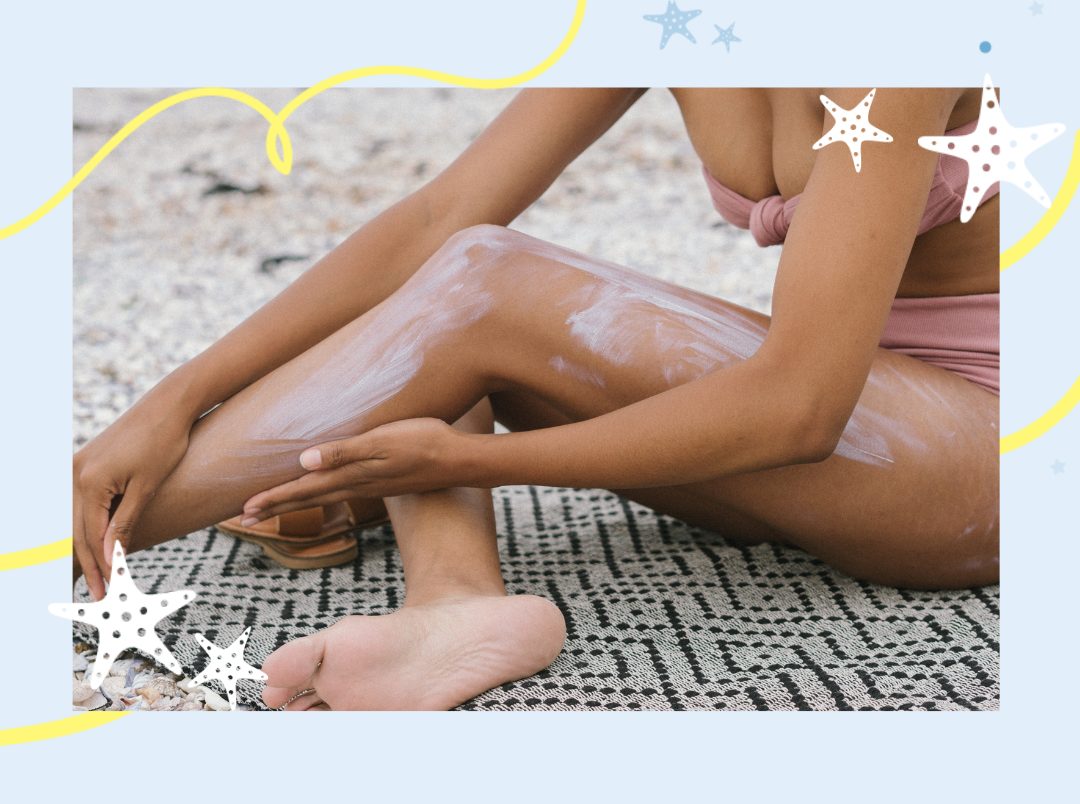We often speak of finding a signature scent or nude lipstick as pinnacles of adulthood success – but have you ever experienced the pure bliss and triumph that comes with finally unearthing your sunscreen soulmate? Ugh, the unmatched, top-tier affair! For us, it‘s the formulas that get 10/10 for their white-cast-free finish.
If you’re here, we’re guessing it’s cause you’ve been #burned by some less-than-ideal SPFs that left you looking like a chalky nightmare. You already know you should be wearing daily sunscreen, but it makes it extra difficult when most sunscreens leave a white residue, right? So to cut through the SPF noise, we’re here to explain how to avoid white cast from sunscreens and how to pick the best one for your skin type. Keep scrolling to get the scoop.
What Causes A White Cast In Sunscreen?
Sunscreens fall into two categories: mineral sunscreens and chemical sunscreens. The critical difference between these types of sunscreens lies in how they block rays. Chemical sunscreens work by absorbing UV rays, converting them to heat, and releasing them, hence the original name, sunblock. Physical sunscreens, however, sit on the surface and create a physical barrier to reflect the sun’s rays. They’re made with ingredients such as titanium oxides and zinc – which are the culprits behind that chalky white residue.
The ingredients in chemical sunscreens such as oxybenzone, avobenzone, octisalate, octocrylene, octixonate, and homosalate – don’t have the same white colour, so they typically don’t leave the same white residue. But if you prefer mineral sunscreens which are usually ideal for sensitive skin or hyperpigmentation, as well as being considered reef-safe – it’s not all bad scenario. The modern formulas are much more enjoyable to wear. They have come a long way from their chalky, white, hard-to-spread predecessors. Scroll on to know how to avoid white cast from sunscreens.

What To Look For In Sunscreen To Avoid A White Cast?
Examine The Formula
If you want a mineral sunscreen, look for a formula that promises a sheer or clear finish, which means it’s specifically formulated to leave an unnoticeable protective layer behind, thanks to transparent zinc oxide. You can also opt for tinted formulations, which are pigmented in different shades to help curb the white cast.
Go For A Chemical Sunscreen
Chemical sunscreens don’t reflect the light like physical sunscreens, so they don’t leave a white cast. So if you don’t want to play the whole trial-and-error game with mineral sunscreens, it’s totally cool to just pick a chemical formula and call it a day. Whichever formula you’re most likely to wear every single day – even when it’s cloudy or you’re indoors – is the one you should go with.
Pick SPF 30 Or Higher
Yes, SPF 30 is the bare minimum requirement for sunscreen to be effective. So if your moisturiser or primer has anything less than that, it’s not giving you the full sun protection that you need. Once you’ve nailed the SPF, look for sunscreens that say broad-spectrum, meaning they will protect you from both UVB rays and UVA rays. UVA and UVB. UVB rays are the culprits behind sunburn, skin discolouration, dreaded sunspots, and redness – they also contribute to skin cancer.
Hope you’ve found your SPF soulmate!
Featured Image: Pexels



